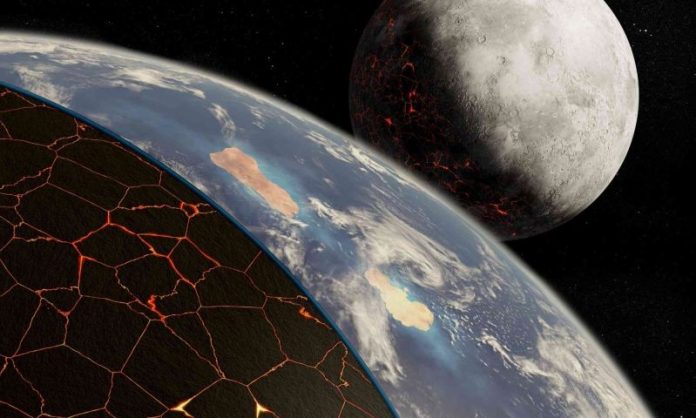
Ever thought about how life began on Earth?
Some scientists believed that a process called plate tectonics was essential. But new findings are challenging that idea!
Let’s break things down a bit. Earth’s outer shell is like a jigsaw puzzle, made up of large pieces called tectonic plates.
These plates move around, and their movement is called plate tectonics. As they move, heat from inside the Earth comes out, shaping our world and creating things like mountains and oceans. Many believed that this process was crucial for life to start on our planet.
John Tarduno, a researcher from the University of Rochester, led a study that looked back almost 4 billion years to see if these moving plates were active when life first appeared.
Guess what? They found out that these plates weren’t moving around much back then!
The team used little crystals called zircons to peek into Earth’s distant past. These crystals are like tiny time capsules that can tell scientists about conditions billions of years ago.
With their help, Tarduno and his team discovered that Earth was getting rid of its heat in a different way, not through moving plates. They called this the “stagnant lid regime.”
So, why does this matter? Tarduno says it means that life might not need moving plates to start on other planets. “When we’re looking at distant planets to see if they might have life,” he explains, “they don’t necessarily need to have plate tectonics.”
Eva Zanzerkia, from the National Science Foundation, adds that this discovery shows how modern science helps us understand our planet’s history and how life began. It also helps in our quest to find life beyond Earth.
But wait! While life might have started without moving plates, these plates still play a big role. Let’s take the example of our neighboring planet, Venus. It’s a hot, unfriendly place with a thick carbon dioxide atmosphere and scary sulfuric acid clouds. Why? One reason might be that Venus doesn’t have plate tectonics to help remove heat from its surface efficiently.
Tarduno hints that if Earth didn’t have plate tectonics, our planet might have ended up like Venus. But don’t worry! While life began without moving plates, these plates likely started moving about 3.4 billion years ago. However, scientists are still trying to pin down the exact time.
In the end, Tarduno sums it up well. He believes that in the long run, plate tectonics is crucial for Earth. It helps get rid of heat, creates a protective magnetic field, and keeps our planet livable. “But,” he adds, “our findings show that in the early days, and for a long time after, Earth did just fine without them.”
So, next time you look at the ground beneath your feet, remember that our Earth has many secrets and surprises, and we’re still learning more about its incredible story every day!
Follow us on Twitter for more articles about this topic.
Source: National Science Foundation.



